Southern Europe
The term Southern Europe, at its most general definition, is used to mean "all countries in the south of Europe". However, the concept, at different times, has had different meanings, providing additional political, linguistic and cultural context to the definition in addition to the typical geographical, phytogeographic or climatic approach. Most Southern European countries border the Mediterranean Sea.
Contents |
Geographical definition

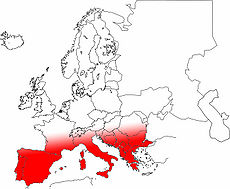
Geographically, Southern Europe is the southern half of the landmass of Europe. This definition is relative, with no clear limits. The Alps and Massif Central mountains constitute a physical barrier between Italy and France and the rest of Europe.
Countries geographically considered part of Southern Europe include:
Iberian Peninsula
 Andorra
Andorra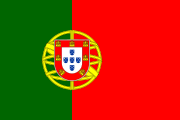 Portugal (including: Madeira and Azores)
Portugal (including: Madeira and Azores)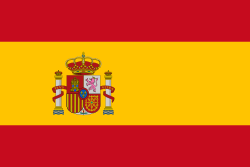 Spain (including: Balearic Islands)
Spain (including: Balearic Islands)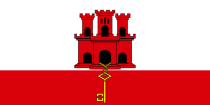 Gibraltar (British overseas territory)
Gibraltar (British overseas territory)
Italian Peninsula
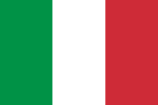 Italy (including: Sardinia and Sicily)
Italy (including: Sardinia and Sicily)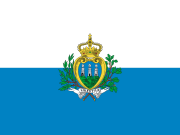 San Marino
San Marino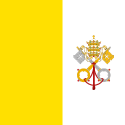 Vatican City
Vatican City
Balkan Peninsula
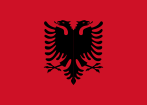 Albania
Albania Bosnia and Herzegovina
Bosnia and Herzegovina Bulgaria
Bulgaria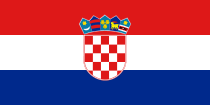 Croatia (below Sava and Kupa)
Croatia (below Sava and Kupa)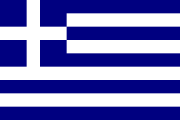 Greece (including: Aegean Islands, Crete, and Ionian Islands)
Greece (including: Aegean Islands, Crete, and Ionian Islands)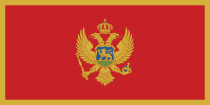 Montenegro
Montenegro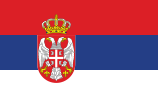 Serbia (below Sava and Danube)
Serbia (below Sava and Danube) Macedonia
Macedonia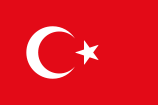 Turkey (3% of the country (East Thrace) lies in Europe, the rest in Asia)
Turkey (3% of the country (East Thrace) lies in Europe, the rest in Asia)
Other
 Croatia (northern regions (Slavonia, Zagreb, Međimurje and Zagorje) are
Croatia (northern regions (Slavonia, Zagreb, Međimurje and Zagorje) are France (northern regions are usually not considered as southern European)
France (northern regions are usually not considered as southern European)
sometimes considered as Central Europe)
 Cyprus (geographically part of Asia but considered European for historic and cultural reasons)
Cyprus (geographically part of Asia but considered European for historic and cultural reasons)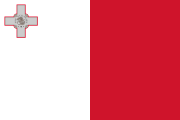 Malta (including: Gozo)
Malta (including: Gozo)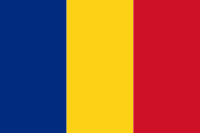 Romania (Northern Dobruja is considered Southern European and sometimes Wallachia. Transylvania is sometimes considered as Central Europe)
Romania (Northern Dobruja is considered Southern European and sometimes Wallachia. Transylvania is sometimes considered as Central Europe) Serbia (northern regions (Vojvodina, northern Belgrade) are sometimes considered as Central Europe)
Serbia (northern regions (Vojvodina, northern Belgrade) are sometimes considered as Central Europe)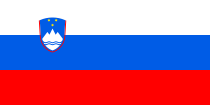 Slovenia (region of Primorska)
Slovenia (region of Primorska)
United Nations geoscheme
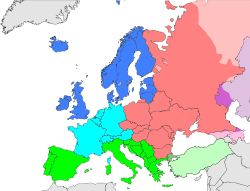
For its official works and publications, the United Nations Organization groups countries under a classification of regions. Southern Europe, as defined by the United Nations (the sub-regions according to the UN), comprises the following countries and territories:
 Albania
Albania Andorra
Andorra Bosnia and Herzegovina
Bosnia and Herzegovina Croatia
Croatia Gibraltar (can be included in Western Europe politically as it is a territory of the
Gibraltar (can be included in Western Europe politically as it is a territory of the  United Kingdom)
United Kingdom) Greece
Greece Italy (including: Sardinia and Sicily)
Italy (including: Sardinia and Sicily) Macedonia
Macedonia Malta (including: Gozo)
Malta (including: Gozo) Montenegro
Montenegro Portugal (including: Madeira and Azores)
Portugal (including: Madeira and Azores) San Marino
San Marino Serbia
Serbia Slovenia
Slovenia Spain (including: Balearic Islands)
Spain (including: Balearic Islands) Vatican City
Vatican City
Climatical definition
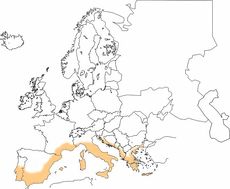
The most emblematic climate of Southern Europe is the Mediterranean climate, which, has become a typically known characteristic of the area, to the point that many people consider that the concept of "southern Europe" concerns only the areas of mediterranean climate. Many northern Europeans often tend to think (because many of them go to the coastal areas in summer) that all southern Europe has that mediterranean climate while in fact many different climates do exist in southern Europe: Continental in inland Iberian peninsula, in inland balkanic peninsula, in northern Italy and south-central France. Oceanic climate is of course found in the Coasts of the Atlantic in Portugal, Spain and south-west France.
The area presents similar landscapes throughout, including:
- Dry Hills
- Small Plains
- Pine Forests
- Olive Trees
The area which is considered climatically Southern Europe is:
 Albania
Albania Bosnia and Herzegovina (coasts)
Bosnia and Herzegovina (coasts) Croatia (coasts)
Croatia (coasts) Cyprus
Cyprus France (southeast coast, and the island of Corsica)
France (southeast coast, and the island of Corsica) Gibraltar
Gibraltar Greece (coasts)
Greece (coasts) Italy (except the Po River plain and Alps and Apeninne region)
Italy (except the Po River plain and Alps and Apeninne region) Malta
Malta Monaco
Monaco Montenegro
Montenegro Portugal (southern two-thirds)
Portugal (southern two-thirds) Serbia (south)[1]
Serbia (south)[1] Spain (southern half and eastern coasts)
Spain (southern half and eastern coasts) Turkey (southern and western coasts)
Turkey (southern and western coasts)
Phytogeographical definition
.png)
Southern Europe's flora is that of the Mediterranean Region, one of the phytochoria recognized by Armen Takhtajan. The Mediterranean and Submediterranean climate regions in Europe comprise the following countries and territories:[2]
 Albania
Albania Bosnia and Herzegovina
Bosnia and Herzegovina Bulgaria
Bulgaria Croatia
Croatia Cyprus
Cyprus Greece
Greece France (the southern and southeastern part, and the island of Corsica)
France (the southern and southeastern part, and the island of Corsica) Hungary (the southwestern part till the Balaton lake)
Hungary (the southwestern part till the Balaton lake) Italy
Italy Macedonia
Macedonia Malta
Malta Montenegro
Montenegro Portugal (the southern half)
Portugal (the southern half) Romania (only the southern part along the Danube river)
Romania (only the southern part along the Danube river) Serbia
Serbia Slovenia
Slovenia Spain (except for the northwestern part)
Spain (except for the northwestern part) Switzerland (only Ticino)
Switzerland (only Ticino) Ukraine (only the southern part of Crimea)
Ukraine (only the southern part of Crimea) Turkey
Turkey
Linguistic Southern Europe
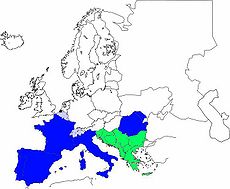
Romance languages
Romance languages and modern Greek are the heirs of latin and ancient Greek as the main historical languages of the mediterranean area. Romance languages have spread from the Italian peninsula, and are emblematic of southern-western Europe: the "latin arch" (Romania and Moldava are an exception on that point); modern Greek is used in Greece and Cyprus.
 Andorra: Catalan
Andorra: Catalan.svg.png) Belgium: French
Belgium: French France: French
France: French Italy: Italian
Italy: Italian Luxembourg: French
Luxembourg: French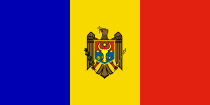 Moldova: Romanian
Moldova: Romanian Monaco: French
Monaco: French Portugal: Portuguese
Portugal: Portuguese Romania: Romanian
Romania: Romanian San Marino: Italian
San Marino: Italian Spain: Spanish
Spain: Spanish Switzerland: French, Italian, and Romansh
Switzerland: French, Italian, and Romansh Vatican City: Italian
Vatican City: Italian
Greek language
Albanian language
Albanian is also a language rooted in southern Europe, spoken in the Balkanic peninsula.
South Slavic languages
Slavic languages that are now spoken in southern Europe are not rooted in the mediterranean area nor spoken mainly in those areas: In that sense those languages are not part of the linguistic definition of southern Europe, since they are logically associated with their "core". That said southern Slavic languages form a quite homogenous area, geographically separated from north Slavic languages by Hungary and Romania.
 Bosnia and Herzegovina: Serbian [3]
Bosnia and Herzegovina: Serbian [3] Bulgaria: Bulgarian
Bulgaria: Bulgarian Croatia: Croatian [3]
Croatia: Croatian [3] Macedonia: Macedonian
Macedonia: Macedonian Montenegro: Serbian [3]
Montenegro: Serbian [3] Serbia: Serbian [3]
Serbia: Serbian [3] Slovenia: Slovene
Slovenia: Slovene
Germanic languages
Thanks to the English colonisation in Malta and Gibraltar, Germanic languages have a little presence in southern Europe, far from the core of germanic languages in north-western Europe. Malta uses English as a second language in some cases (after Maltese, which still is the original and main native language). In Gibraltar, English is the official language but Spanish and llanito (mix of Andalucian, Spanish with some English) are also spoken.
Other languages groups are also present in southern Europe
Semitic languages
Turkic languages
Notes
- ↑ World Factbook
- ↑ Wolfgang Frey and Rainer Lösch; Lehrbuch der Geobotanik. Pflanze und Vegetation in Raum und Zeit. Spektrum Akademischer Verlag, München 2004
- ↑ 3.0 3.1 3.2 3.3 Serbian, Croatian, Bosnian and Montenegrin are sometimes considered variants of a single Serbo-Croatian language.
|
|||||||||||||||||||||||||||||||||||||
|
||||||||||||||||||||||||||||||||